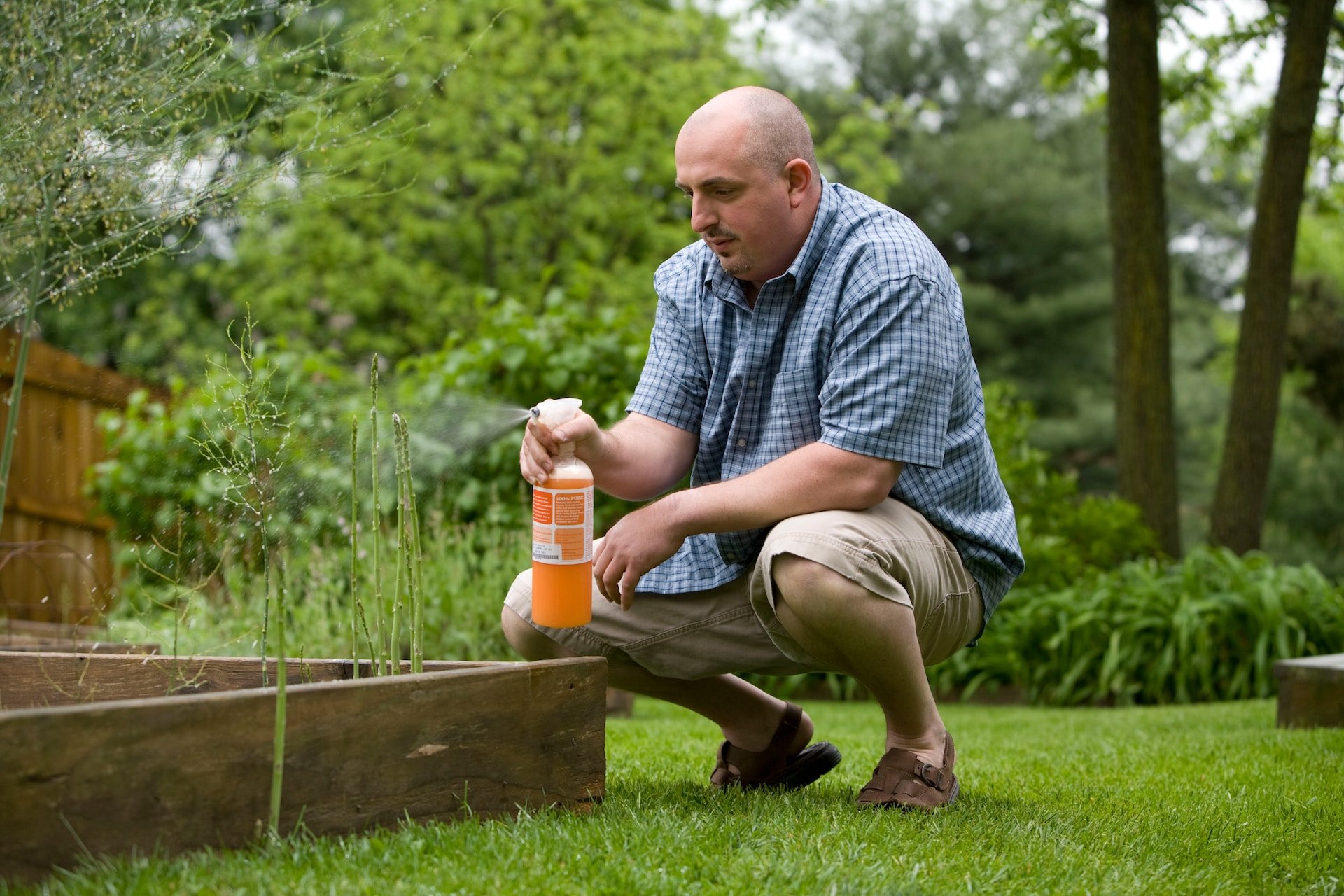In the age-old battle between gardeners and pesky insects, it’s easy to assume that chemical pesticides are the only way to protect your precious plants. But fear not, nature-loving green thumbs! There is hope.
With a little creativity and deep respect for the environment, you can employ natural pest control methods that work in harmony with Mother Nature.
In this comprehensive guide, we explore several tried-and-true tactics to keep unwanted intruders at bay, so you can cultivate a thriving, chemical-free garden. Read on!
Prevention Techniques
An ounce of prevention is worth a pound of cure, as the saying goes. And this adage rings especially true when it comes to keeping pests out of your garden.

- Remove weak plants. Weak plants may already be infected or, if not, could attract predators. Remove and dispose of these plants away from the garden area to prevent further issues.
- Interplant crops. Mixing plantings makes it more difficult for pests to spread throughout an entire crop. Additionally, ensure proper spacing between plants to promote healthy air circulation and minimize the spread of pests.
- Utilize seaweed mulch or spray. Seaweed is rich in trace elements like iron, zinc, barium, calcium, sulfur, and magnesium that promote healthy plant growth. Using seaweed fertilizer in mulch or spray form enhances growth while giving plants the strength to withstand diseases. Additionally, seaweed mulch repels slugs.
- Sanitation. Regularly remove dead leaves, weeds, and other debris from your garden to eliminate potential hiding spots for pests.
- Disinfect tools. After working with infested plants, clean your tools before moving on to other areas of the garden to slow down the spread of invasive insects.
- Keep foliage dry. Wet foliage can encourage both insect and fungal damage to your plants. Water your plants early in the day so that the foliage remains dry for most of the day. Consider using drip irrigation methods to deliver water directly to root systems without wetting the foliage.
- Purchase certified transplants only. When introducing new plants or soil amendments to your garden, ensure they come from a trusted source. This helps guarantee that any new additions are clean and free from pests or diseases.
By following these preventive measures, you create an environment where pests find it difficult to thrive, paving the way for a healthy and bountiful garden.
Companion Planting
Companion planting is the strategic placement of certain plants alongside one another to achieve mutual benefits such as pest control or improved growth.
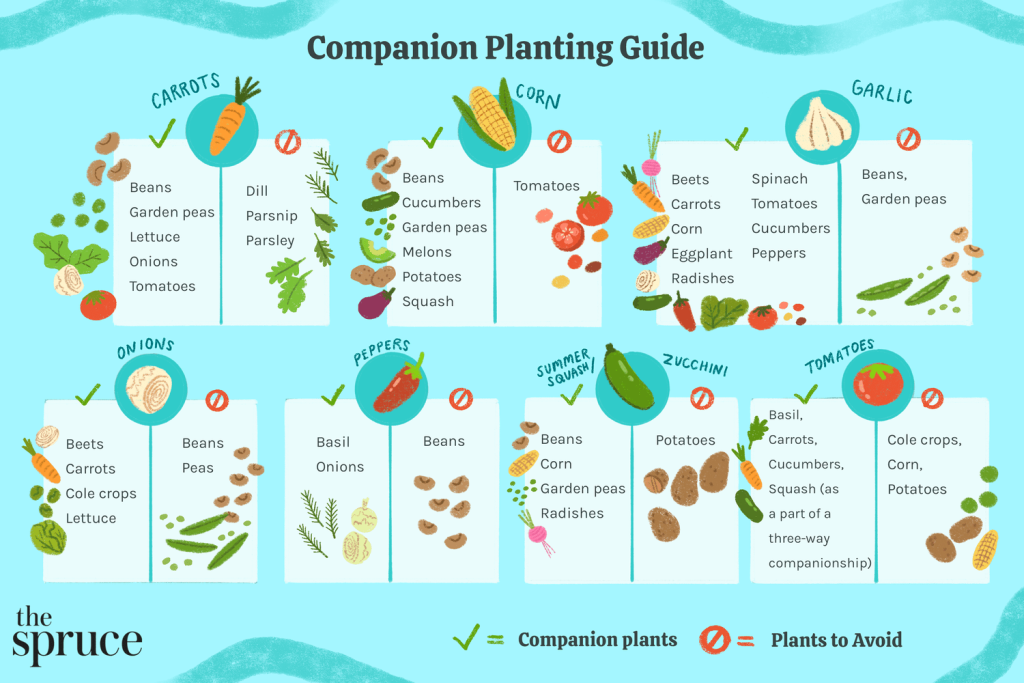
Here are a few examples of effective companion planting explained:
- Marigolds and vegetables. Incorporating marigolds into your vegetable garden can deter nematodes and other pests. Marigolds release natural chemicals that repel these unwanted visitors, providing a chemical-free approach to pest control.
- Basil and tomatoes. Planting basil alongside tomato plants helps repel flies and mosquitoes. Additionally, it is believed that basil can improve the flavor of tomatoes while also promoting their growth.
- Carrots and onions. Planting carrots alongside onions discourages carrot flies and onion maggots, as the strong scent of onions masks the carrot aroma.
- Nasturtiums as trap crops. Some plants, like nasturtiums, serve as “trap crops,” attracting pests away from more valuable plants. Placing nasturtiums strategically around your garden will draw aphids, whiteflies, and other pests away from your primary crops, making it easier to manage infestations.
By understanding the relationships between different plants, you can design a garden that leverages nature’s power to keep pests at bay.
Maintain the Garden’s Soil
Healthy soil equates to healthy plants with increased resistance against pests and diseases. Here are a few strategies that will help you achieve just that:
- Test your soil’s pH levels. This will allow you to determine if it offers optimal conditions for plant growth. Most plants prefer a slightly acidic to neutral pH range of 6.0 to 7.0. You can purchase a soil test kit from a local garden center or online.
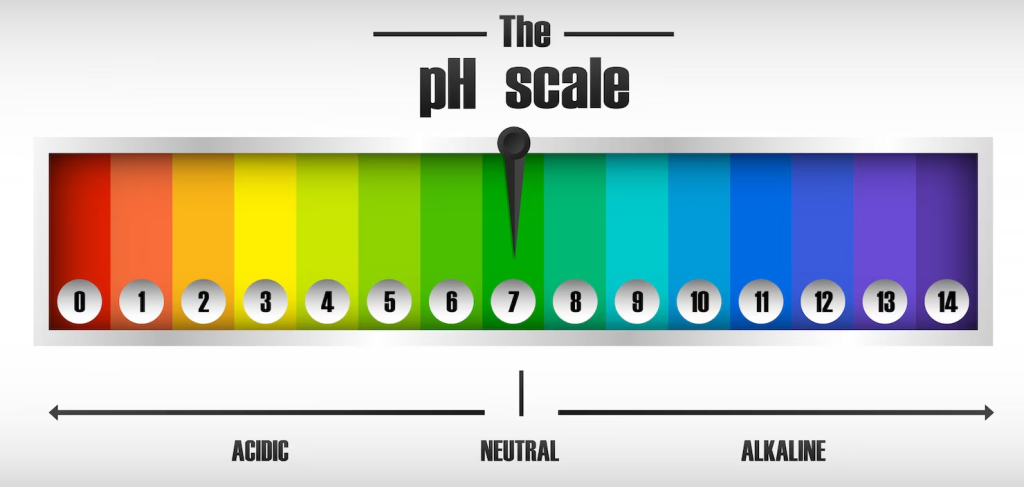
- Amend the soil as needed. Based on your soil test results, amend the soil with organic matter such as compost or well-rotted manure to improve its structure and nutrient content. These amendments can help balance the pH levels while also providing essential nutrients for plant growth.
- Practice no-dig gardening methods to preserve the soil’s natural ecosystem. No-dig methods minimize the disruption of beneficial organisms like earthworms and fungi that contribute to healthy soil and help control harmful pests.
- Use organic mulches. Organic mulches, such as straw, shredded leaves, or wood chips, can be applied around plants to help retain moisture, suppress weeds, and regulate soil temperature. As they decompose, organic mulches also contribute valuable nutrients back into the soil.
- Implement crop rotation. Rotating your crops each year helps prevent the buildup of soil-borne diseases and pests while also promoting balanced nutrient utilization. This practice involves changing the location of specific plant families in your garden annually.
- Regularly add compost. Composting is an excellent way to recycle kitchen scraps and yard waste into nutrient-rich organic matter for your garden. Incorporate compost into your garden beds regularly to continually enrich the soil and support healthy plant growth.
Related: How To Check the PH Level of the Soil
Attract Beneficial Insects

While some insects wreak havoc on your garden, others act as nature’s pest control squad. Ladybugs, lacewings, and parasitic wasps are just a few examples of these beneficial insects that help keep harmful pests in check.
Related: Meet Your Garden’s New Best Friends: 13 Beneficial Insects for Natural Pest Control
To attract these natural predators, plant a diverse range of flowering plants throughout your garden. Native blooms like goldenrod, yarrow, and wild bergamot are particularly enticing to these helpful insects.
Moreover, consider installing insect hotels — small structures designed to provide shelter for beneficial insects — in various spots around your garden. This will encourage them to stick around and feast on pests like aphids, caterpillars, and mites.
In our post dedicated specifically to attracting beneficial insects to the garden, we cover even more effective methods — make sure you don’t miss it!
Learn more: Natural Pest Control: 7 Ways to Attract Beneficial Insects to Your Garden
Non-Toxic Homemade Remedies
When it comes to keeping pests at bay, you don’t need to look further than your kitchen pantry for some non-toxic solutions. These practical solutions are not only cost-effective but also environmentally friendly:
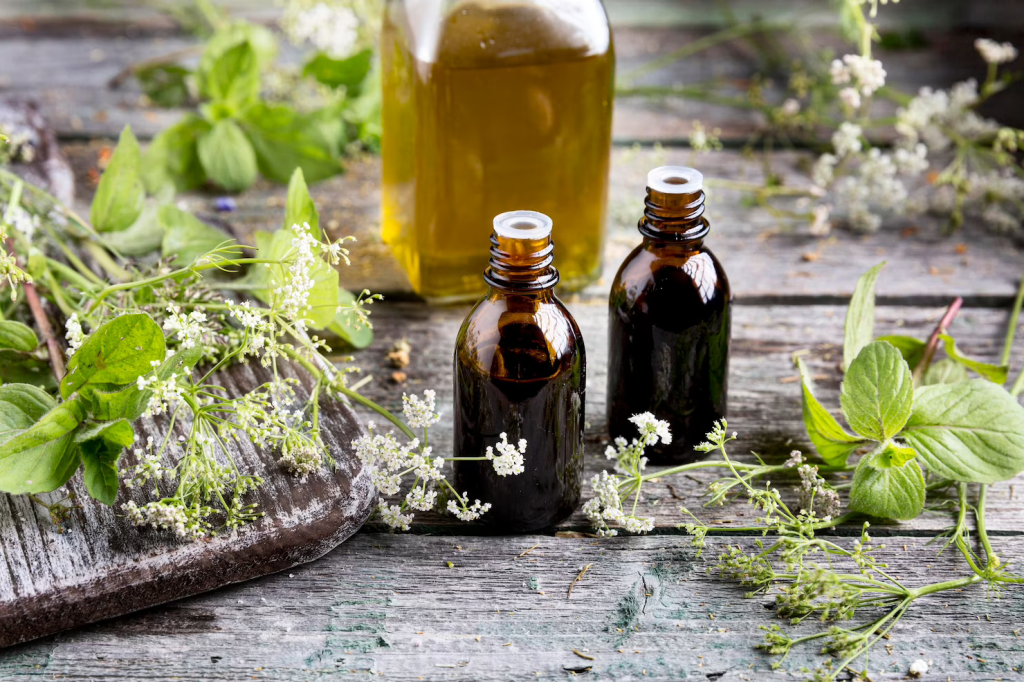
Soapy Water Solution
For soft-bodied pests like aphids and whiteflies, mix a few drops of dish soap with water and spray it onto your plants. This solution breaks down the protective coating on these insects, causing them to dehydrate and die.
Be sure to rinse the plants with water after a few hours to remove any soap residue.
Garlic and Mineral Oil Spray
A blend of chopped garlic cloves and mineral oil makes an effective organic pesticide against a variety of insects.
To create this mixture, add 1-2 tablespoons of chopped garlic to 2 cups of mineral oil and let it sit for 24 hours. Strain the mixture, then dilute it with equal parts water before spraying it onto your plants.
Beer Trap for Slugs
To control slug populations, set up beer traps in your garden beds. Bury a shallow container filled with beer just below ground level. Slugs will be attracted to the scent, crawl into the container, and drown.
Replace the beer every few days or as needed.
Baking Soda Fungicide
For fungal diseases like powdery mildew or blackspot, mix 1 tablespoon of baking soda, 1/2 teaspoon of liquid soap, and 1 gallon of water. Spray this solution onto affected plants once a week until the issue is resolved.
Neem Oil Treatment
Neem oil is a natural, versatile solution for controlling various insects, mites, and fungal diseases in your garden. Derived from the seeds of the neem tree, this oil disrupts the life cycle of pests and inhibits their feeding and reproduction.
To create a neem oil spray, mix 1-2 teaspoons of pure neem oil with 1 quart of water and a few drops of liquid soap. The soap acts as an emulsifier, helping the oil mix with water.
Shake the mixture well before spraying it onto your plants, ensuring you cover both the tops and bottoms of leaves, as well as stems.
Related: Organic Insecticide: How to Use Neem Oil on Plants
Chili Pepper Insecticide
To deter various insects, create a spicy chili pepper spray by blending 1-2 cups of fresh or dried hot peppers with 2 cups of water. Let the mixture steep for 24 hours, then strain it and add a few drops of dish soap.
Spray the solution onto your plants, taking care not to get it on your skin or in your eyes.
Remember: Always test a small area of the plant before applying any solution to the entire plant to ensure it does not cause damage.
Insecticidal Soap
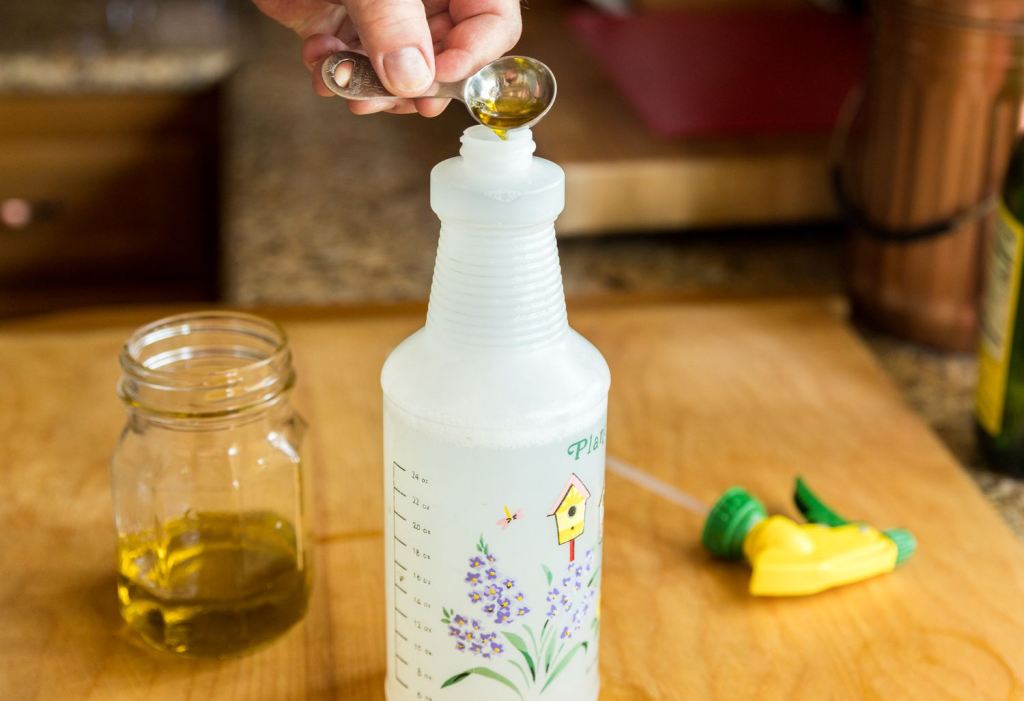
Insecticidal soaps are a safe and effective way to control soft-bodied pests like aphids, mealybugs, and spider mites without harming beneficial insects or the environment. These soaps work by breaking down the protective outer layer of the pest’s exoskeleton, ultimately causing dehydration and death.
You can purchase ready-to-use insecticidal soap sprays at most garden centers. They typically come as concentrates that need to be diluted in a spray bottle before use. Since the diluted solution remains effective for only a few days, mix just enough for one application at a time.
You can also make your own by combining liquid dish soap with water — as described in the section above.
When applying insecticidal soap, ensure that you thoroughly wet the leaves on both sides. The soap may cause leaf burn, so test it on a small area before applying it to an entire crop.
The soap must make direct contact with the insects to work effectively, meaning there’s no residual effect with this method. Consequently, you’ll need to treat your plants every five to seven days to address newly hatched insects.
Deterrents & Barriers
Physical barriers and deterrents can play a significant role in protecting your garden from unwanted invaders. Here are some practical, cost-effective methods to keep invaders at bay:
- Yellow flypaper. Old-fashioned flypaper or any yellow board coated with a sticky substance can effectively trap aphids and whiteflies. Place these traps strategically around your garden to catch these pests.
- Barrier paper. Waxed cardboard scraps from milk cartons can protect Brassica family seedlings (broccoli, cabbage, Brussels sprouts, kale, or cauliflower) from cabbage moths. Cut 2-inch squares and create slits in the center, then place them around each seedling stem to prevent moths from laying eggs.
- Apple maggot traps. Apple maggots are one of the most destructive pests for homegrown apples. Manage them using sticky red sphere traps, hanging one trap per every 100 apples on a tree.
- Pheromone traps. These traps use biological mating scents to attract insects to a sticky surface. While effective, ensure they’re positioned along your garden’s perimeter to avoid drawing in pests from outside.
- Cloches. A cloche acts as a miniature greenhouse for seedbeds and young plants, providing protection against pests. Although it needs opening for watering and on hot days, the healthy growth it promotes in plants offers natural resistance against pests and diseases.
- Floating row covers. Lightweight, opaque material draped over your garden beds creates an effective barrier against insects and birds while still allowing sunlight and water through. Secure the edges with rocks or boards to prevent wind from lifting the covers.
Hand-Pick Those Bugs
Sometimes the simplest method is the most effective. When it comes to managing small infestations, donning a pair of gloves and hand-picking pests off your plants can be surprisingly satisfying.

Carefully inspect your plants for signs of damage and remove any unwanted guests you find. Several garden pests are easily managed through hand-picking:
- slugs,
- squash bugs,
- tomato hornworms,
- Japanese beetles.
For instance, to get rid of nocturnal pests like slugs and snails, schedule an evening stroll through your garden armed with a flashlight and a container of soapy water. Dispose of any offenders you encounter by dropping them into the soapy solution.
When to Call a Professional?
While organic pest control methods are generally manageable for most gardeners, there can be situations where calling a professional might be the best course of action. If you’re short on time or uncertain about the most suitable method for your specific needs, a local lawn care expert can provide valuable assistance.
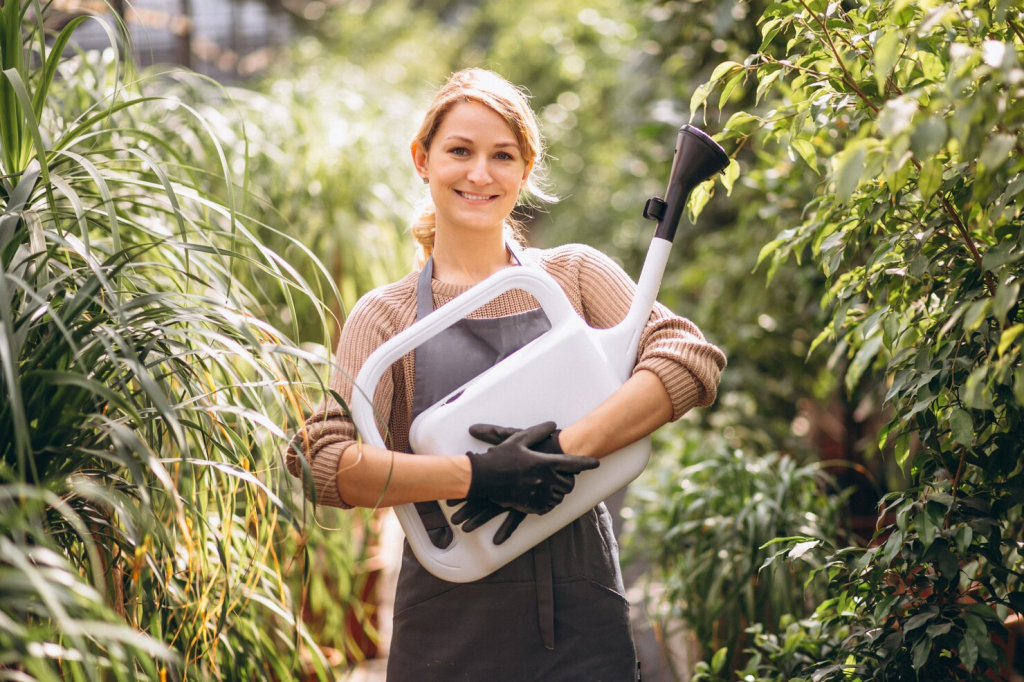
Here’s when it might be practical to seek professional help:
- Severe infestations. If your garden is experiencing an overwhelming pest infestation that doesn’t seem to improve with DIY methods, it’s wise to consult a professional. They can assess the severity of the issue and apply appropriate organic pest control solutions tailored to your situation.
- Identification of pests and diseases. A professional can help accurately identify the types of pests or diseases affecting your garden and recommend targeted control methods based on their expertise.
- Proper application of treatments. In some cases, applying treatments incorrectly can be counterproductive or even harmful to your plants. A lawn care expert will have the knowledge and experience to apply treatments effectively without causing damage.
- Customized strategies. A professional can develop a comprehensive strategy for managing pests in your garden, taking into consideration factors like plant varieties, environmental conditions, and local pest populations.
- Ongoing maintenance and monitoring. Hiring a professional for routine maintenance and monitoring can help ensure that any emerging issues are addressed promptly. This proactive approach can prevent minor problems from escalating into significant challenges.
Takeaway
Embracing organic pest control methods in your garden is not only beneficial for the environment but also promotes the health and well-being of your plants.
By incorporating preventive strategies, maintaining soil health, utilizing companion planting, and applying non-toxic homemade remedies, you can effectively manage pest populations without resorting to harmful chemicals.
Additionally, knowing when to seek professional help ensures that your garden receives the best care possible. So, roll up your sleeves, put these techniques into practice, and get ready to outsmart those pesky critters — naturally!
Was it helpful?

Enamored with the world of golf Jack pursued a degree in Golf Course Management at THE Ohio State University. This career path allowed him to work on some of the highest profile golf courses in the country! Due to the pandemic, Jack began Inside The Yard as a side hustle that quickly became his main hustle. Since starting the company, Jack has relocated to a homestead in Central Arkansas where he and his wife raise cattle and two little girls.

